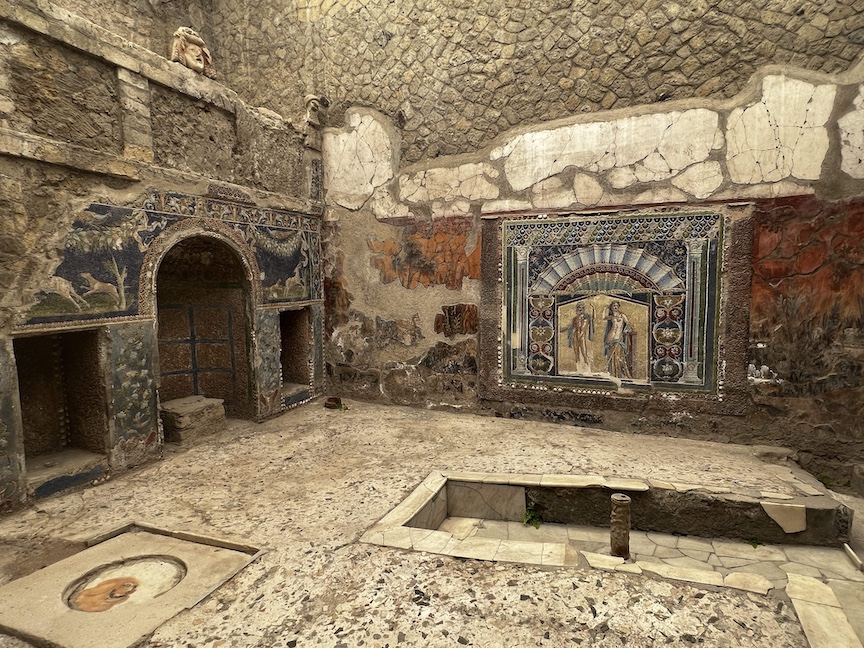The ancient city of Herculaneum, buried by the catastrophic eruption of Mount Vesuvius in 79 CE, offers an extraordinary window into Roman life. Its remarkably preserved houses provide insight into the architecture, decoration, and daily routines of 1st-century CE inhabitants.

Architectural Design and Functionality
Herculaneum’s homes were compact yet designed with precision to balance utility and luxury. The atrium, a central open courtyard, was pivotal, allowing light and air into the house. Adjoining the atrium, the tablinum (reception room) often served as a display area for frescoes and mosaics, reflecting the wealth and taste of the owners.

Many homes included a peristyle garden, surrounded by columns, offering a tranquil retreat. This fusion of practicality and elegance showcases the Romans’ ability to integrate functionality with aesthetic appeal.
Artistic Brilliance
The interiors of Herculaneum houses are renowned for their vivid frescoes and intricate mosaics. The frescoes, often in the Fourth Pompeian Style, featured vibrant colors and themes ranging from mythological stories to detailed architectural motifs. These decorations not only adorned the walls but also reflected the social status and cultural sophistication of the inhabitants.

Floors were often decorated with geometric patterns or narrative mosaics depicting scenes from daily life, nature, or mythology. These elements emphasized the artistic excellence of Roman craftsmanship.
Rare Artifacts and Everyday Items
The pyroclastic surges from Vesuvius preserved materials like wood, which rarely survive in archaeological contexts. Herculaneum houses retain wooden doors, beds, and cupboards, offering a unique glimpse into Roman carpentry.

Kitchen areas revealed tools, clay ovens, and jars containing carbonized food remnants. Dining rooms, or triclinia, featured reclining couches, underscoring the Roman tradition of reclining during meals and the importance of dining as a social and intellectual activity.
Cultural and Social Insights
Herculaneum homes were a blend of Roman and Greek influences, showcasing cultural exchange. The presence of lararia (shrines to household gods) in almost every home highlights the deep-seated religious practices of the time.

The spatial organization within homes reflects social hierarchies, with private family areas separated from public spaces used for entertaining clients or conducting business. This layout underscores the Roman emphasis on decorum and societal roles.
Notable Residences
- The House of the Wooden Partition: Famous for its intact sliding wooden doors, this house exemplifies Roman innovation in carpentry and features lavish frescoes in the atrium and tablinum.
- The Samnite House: One of the oldest houses in Herculaneum, it is celebrated for its first-style frescoes and harmonious architectural layout.
- The House of the Bicentenary: Renowned for its elaborate decorations, including a lararium with a painted image of Hercules, this house highlights the artistic and religious sophistication of its owners.
A Timeless Legacy
Herculaneum’s well-preserved homes are not just remnants of the past; they are vivid narrators of Roman life, offering unparalleled insights into domestic architecture, artistic achievements, and cultural practices. These ancient residences, frozen in time, remain a testament to the ingenuity and sophistication of Roman civilization.

